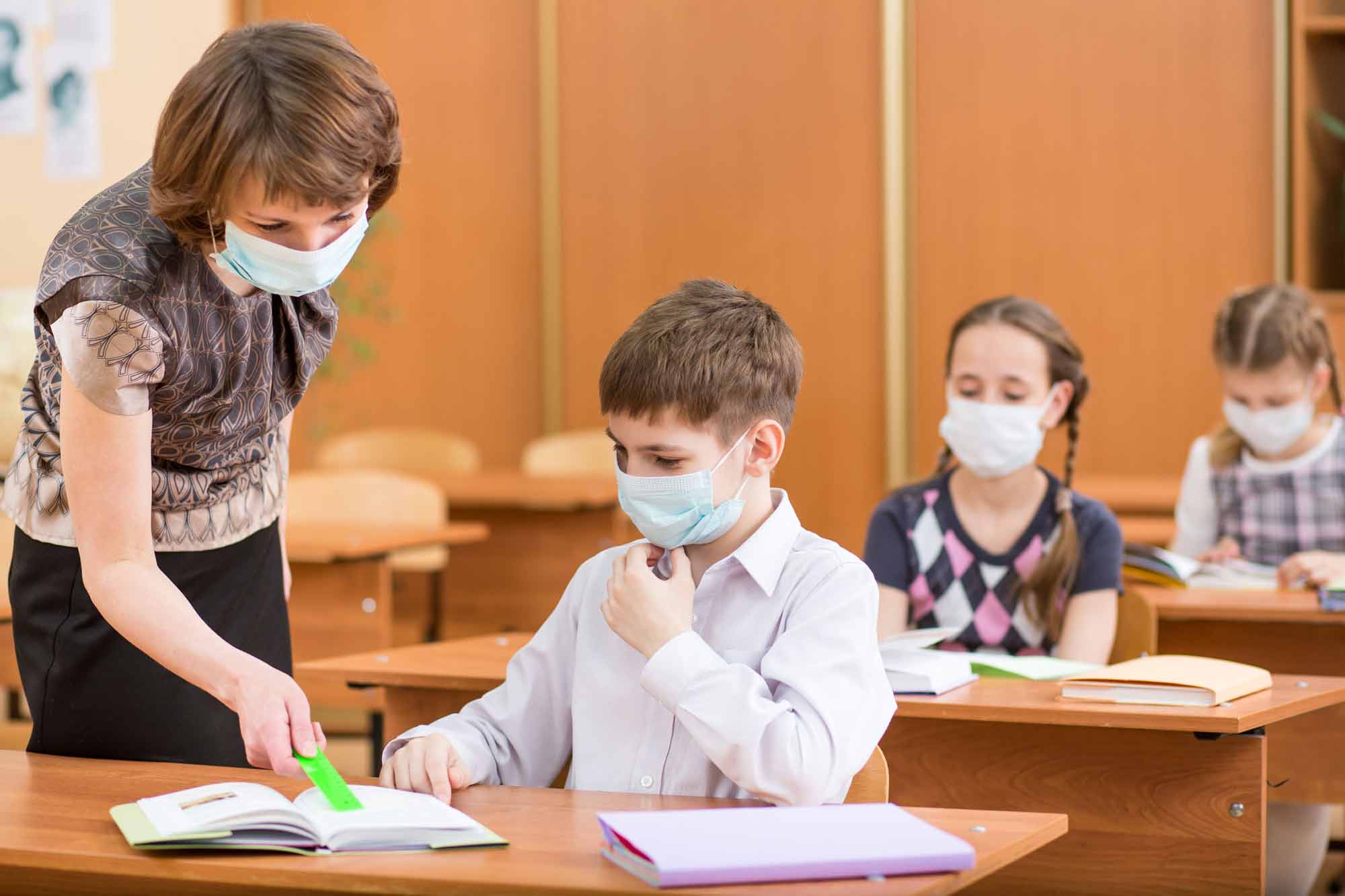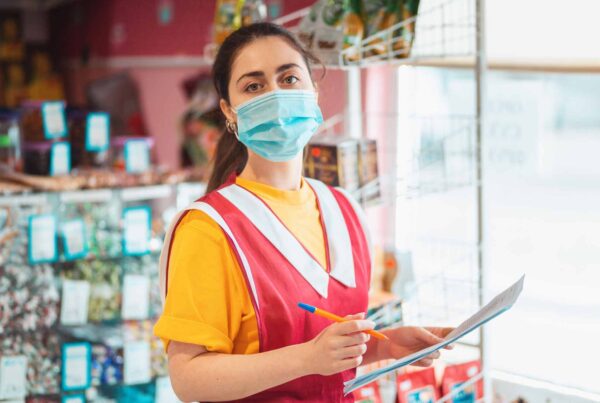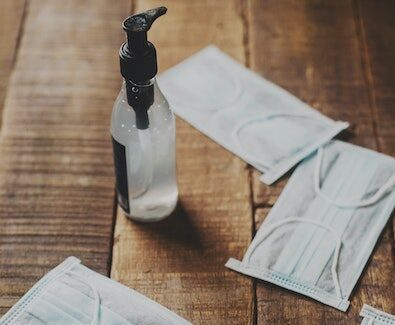Recently, The New York Times published an education briefing discussing why reopening schools is not so easy, especially as some schools lack the adequate personal protective equipment (PPE) to reopen safely. While there is an agreement that students (particularly lower-income students and those with special needs) learn better in in-person settings, there is much less agreement about how to bring about this outcome in the face of unequal resources during a pandemic. Amid this uncertainty, the Biden Administration aims to reopen schools within its first 100 days, a countdown set to run out in late April.
But as schools reopen, are their PPE shortages being addressed?
Demands for PPE Increase as Schools Plan to Reopen
Currently, many schools and individual staff members are turning to resources like Get Us PPE or relying on their own funds to acquire needed PPE. Teachers who purchase PPE themselves can apply these expenses to their $250 educator tax deduction. Unfortunately, many teachers already spend far more than the limited tax deduction allows for other classroom supplies, making the purchase of their own PPE an additional financial burden. In many states, schools are already suffering from historically low funding while hoping federal stimulus dollars for COVID mitigation efforts will come soon enough to obtain the PPE needed to reopen schools safely.
Between November 2020 and January 2021, Get Us PPE found 17% of its PPE requests came from schools. Many of these requests (81%) came from public schools vs. only 19% from private schools. Among the public school requests, 83% were from Title 1 schools (where students qualify for free/reduced-price lunches and other federal benefits), suggesting that districts educating lower-income students have the most unmet needs for PPE. Schools’ most-frequently requested types of PPE are disinfecting wipes, nitrile gloves, and hand sanitizer. The five states that reported the highest number of requests were Texas, Ohio, California, New Jersey, and Illinois.
Get Us PPE is working with schools across the country to help them meet their PPE needs. Many elementary schools are finding it difficult to source child-size masks with the proper fit for younger students. Some urban schools have provided multiple reusable masks to each student, yet not all students’ families have in-home laundry facilities to properly wash the masks in between each use. In lunchrooms, cafeterias, and areas where students eat, sneeze guards or plastic barriers are needed to minimize the travel distance of airborne particles. Get Us PPE is receiving PPE donations from suppliers and working with maker spaces around the nation to produce PPE to open schools safely. Additionally, a guide is being created to inform school shops how to produce some types of PPE that will help schools protect from community spread.
Safety Concerns About COVID-19 Exposure in Schools and Communities
The key barrier to reopening schools is safety. While younger children are less likely to contract COVID-19 and appear to suffer less severe illness, middle school and high school students face somewhat greater risks. Studies conducted in some US states, where schools (primarily elementary schools) were in session during the fall of 2020, have shown some in-school transmission, yet at less significant levels than in the community. There are important caveats to these studies.
The Finer Details of Wisconsin Schools COVID-19 Transmission Studies
A school transmission study released by the CDC on January 29, 2021, indicated schools have not been shown to be significant contributors to community transmission of COVID-19. The study was based on 17 schools in one rural county of Wisconsin where COVID mitigation efforts were strong, and middle schools and high schools were using a hybrid learning model to achieve social distancing. Thanks to a grant, all students were provided three to five multi-layered masks, and statewide mask mandates were in place during the August 31 to November 29, 2020 timeframe of the study.
The study notes that the rural nature of these schools might differ in important ways from urban schools, which tend to be more densely populated, making it challenging to nearly impossible to social distance. It is also noted the ethnic makeup of this rural population was predominantly non-Hispanic White.

It is difficult for studies to track asymptomatic COVID that may have come home from school and later become symptomatic COVID within the home or community, as noted in the last sentence of the study. This is of great concern among urban areas of higher population, ethnic diversity, and socioeconomic disparities, especially if mask mandates are not in place in the community or state.
Lesser known is another Wisconsin transmission study released by the CDC on the same day, which indicated a different perspective on school transmission. This study took a different approach to contact tracing. It analyzed COVID cases across the state and found 5,703 (or 14.3%) were associated with schools or childcare facilities.
Differences between the two Wisconsin schools studies are outlined in an article by Chalkbeat, an education news organization.
Difficulties with Mitigation Efforts and Obtaining PPE to Open Schools Safely
Some parents remain concerned about whether their children’s schools can provide a safe learning environment during this pandemic, especially in large, urban school districts where older buildings with poor ventilation are common. Continually running HVAC fans to increase ventilation is a significant energy cost to schools, and not all weather creates an opportunity to keep windows open. Among Black families and other minorities, school safety concerns are compounded by a generalized lack of trust in public institutions.
Teachers and other workers (e.g., aides, school nurses, therapists, social workers, physical education instructors etc.), who have direct, and sometimes sustained, contact with students, also continue to express safety concerns. Proper PPE is still hard to obtain due to our nation’s ongoing PPE shortage crisis. Employee unions have been at the forefront of pressing these concerns. Some school staff members may have underlying health conditions (or live with others who do) or be of an age where contracting the disease puts them at very high risk for complications. While administrators do what they can with funding available to follow CDC-recommended protocols, skeptics remain in districts both large and small. Until these risks are adequately addressed, many teachers and other direct contact staff members are uncomfortable with the prospect of fully in-person education.
Within this context, concerns about adequate PPE have partially given way to a focus on vaccine access. Many states are attempting to prioritize educators for vaccination before they might qualify based on other criteria (e.g., age). Still, supply constraints make it difficult for teachers and school staff to be fully vaccinated even when their priority level has been raised.
The Biden Administration’s Evolving Approach to Reopen Schools
The CDC has issued a range of recommendations to maintain safety in schools for both staff and students. Adequate PPE, consistent social distancing practices, effective ventilation, availability of hand sanitizer, and handwashing facilities are essential to assuring that both students and the adults who work with them can operate safely in school. In Addition, the CDC recommends using engineering controls (e.g., optimized building ventilation, adding HEPA fan/filtration systems in school buildings) to promote a COVID-19 safe environment. The degree to which these recommendations are implemented and adhered to undoubtedly varies from district to district and from building to building within districts. A lack of confidence that safety standards can be fully implemented and consistently enforced contributes to teachers’ unions’ reluctance to reopen schools at this juncture of the pandemic when COVID-19 variants are on the rise.
The Biden administration’s plan to reopen schools will have all K-8 students back in their classrooms within the first 100 days (roughly by late April 2021). The plan is to implement the CDC’s recommendations of reopening for full in-person learning if appropriate protocols are followed and the community has a positivity rate lower than 8%. The plan assumes Congress passes the necessary legislation to provide financial support. Under this plan, schools could request disaster relief funds from the Federal Emergency Management Agency (FEMA) for COVID-related expenses, such as personal protective equipment, sanitation, improved ventilation, reconfigured classrooms, and upgraded technology.
On March 2, President Biden called on states to prioritize vaccines for school staff and teachers. said he wants every teacher, school staffer, and child care worker in the U.S. to get at least one COVID vaccination dose by the end of March.
Meanwhile, CDC Director Dr. Rochelle Walensky told NPR host Ari Shapiro that the next two or three months are pivotal in the pandemic, adding “If things open up, if we’re not really cautious, we could end up with a post-spring break surge the way we saw a post-Christmas surge. We could see much more disease. We could see much more death.” She went on to describe an alternative vision in which, “we really hunker down for a couple of more months, we get so many people vaccinated and we get to a really great place by summer.”
Although there are many advantages to reopening schools, significant challenges remain. It’s important that schools are well-funded and able to access the PPE the CDC is recommending to reopen safely.
With schools reopening, demand for PPE supplies is going up as well. Get Us PPE encourages schools to register their needs with our organization so we can continue to provide PPE to those who need it most.
Your request will be kept anonymous.
Register Your PPE Needs




